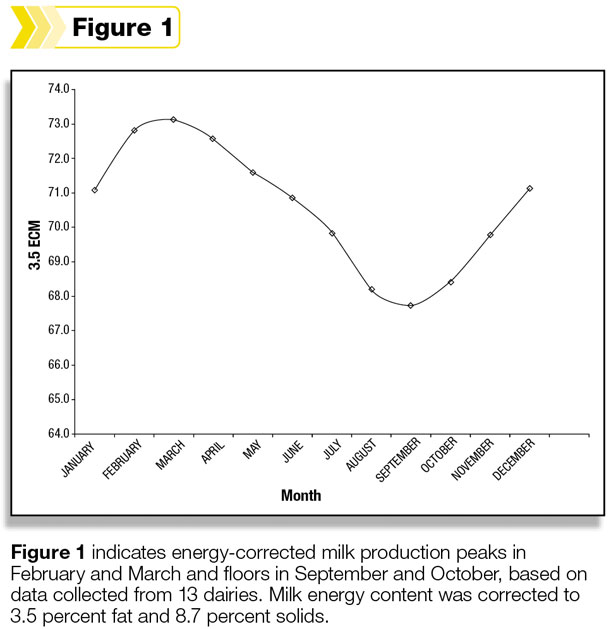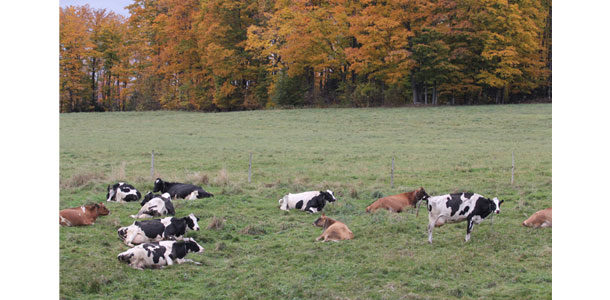Life is built on cycles; a familiar cycle is that of light and dark. Changes in daylight hours are sent to a portion of the brain, and appropriate metabolic adaptations to those changes are seen as cyclic variations in body composition, hair coat and reproduction. We’ve all seen that in our animals and ourselves, getting a little heavier in the fall and leaning out when spring rolls around.
Milk production is not constant either but changes during the year with season (a change in daylight hours) and temperatures that are either less than or greater than the thermoneutrality zone, just to mention a few of the causes. Increases in milk production seen in the spring may be caused, in part, by losses in body fat. Fat is used by the udder to make more milk.
Before the widespread use of freestalls in California, when it used to rain, cows would have to waste energy walking through hock-deep mud and keep warm while laying in that mud. Dairymen who bought only enough alfalfa hay to last from summer until first cutting would run out of mediocre hay, begin feeding alfalfa that had grown slowly from October until March and saw dramatic increases in milk production. Combined with changes in milk production were changes in milk composition and milk energy content.
What do these changes look like over the course of a year? Figure 1 below contains information collected from 13 dairies located in the San Joaquin Valley of California, New Mexico and West Texas, and represents approximately 400,000 cow months. Milk energy content was corrected to 3.5 percent fat and 8.7 percent solids.

It should come as no surprise that minimal energy-corrected milk production is seen at the end of summer. What is of interest, for these dairies, is that the maximum level occurs around March and the minimum in September. The vernal (spring) and autumnal equinox (equal day and night) are the time when the rate of change of daylight hours is maximized. Therefore, it may not be the absolute amount of daylight, but the rate of change that drives production.
Not only do we see differences in production with season, but cows may utilize feed differently depending on the time of day they are fed. Kevin Harvatine, at Pennsylvania State University, is conducting studies to determine if patterns of rumen fermentation can be altered to maximize milk production. Harvatine states that daily rhythms exist in the mammary gland, and proper coordination of lighting, feeding and milking times may result in increased efficiency of milk synthesis.
It may be that we need to rethink the timing between feeding and milking; timings may be different in April from that of October. Harvatine is conducting more work in this area, and we will report his results when published. PD
Carl Old is a nutritionist from LeGrand, California.






